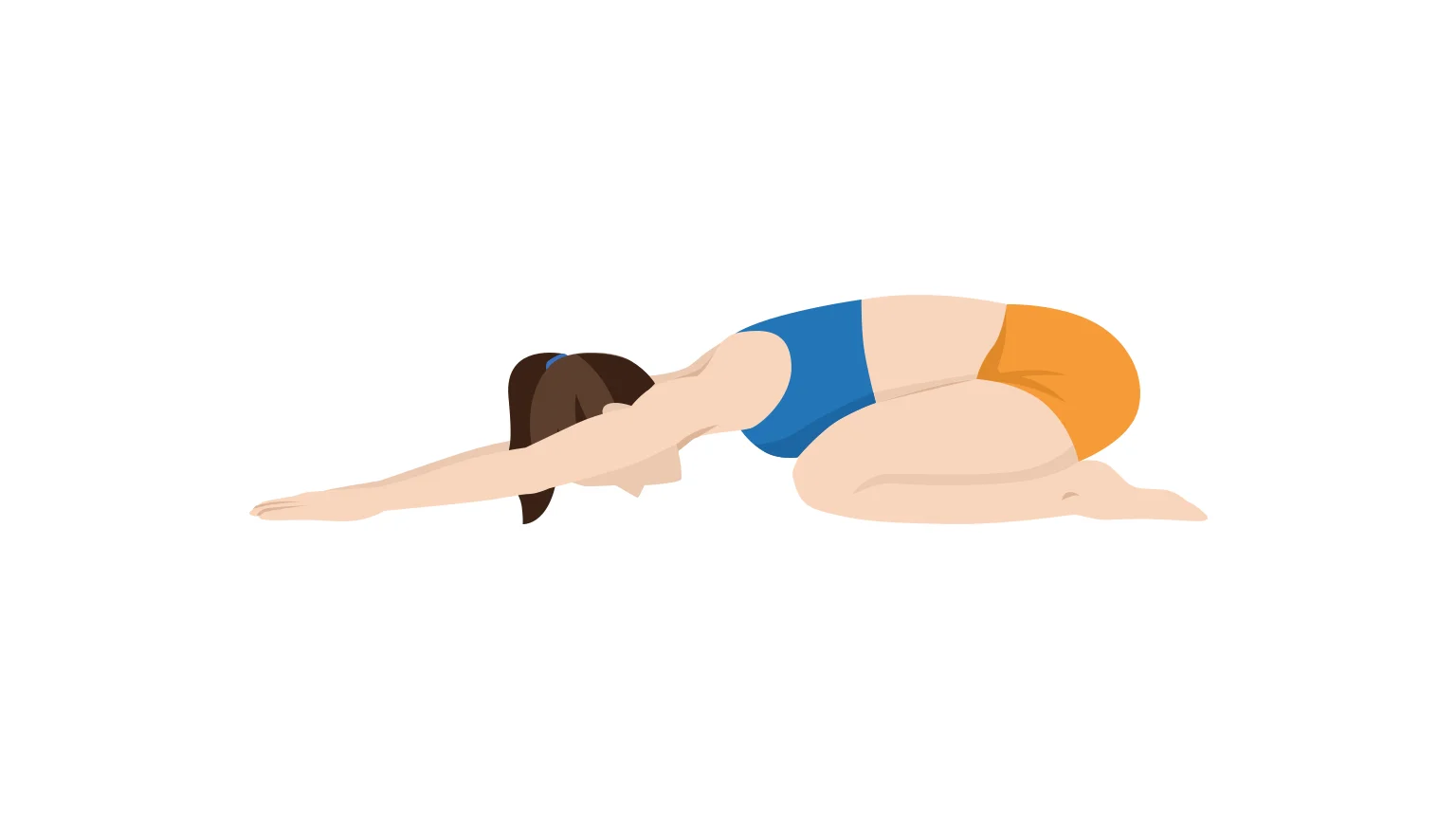Child’s Pose (Balasana)

The Child’s Pose, also known as Balasana, is a prone yoga pose. In this pose, you kneel on your yoga mat, with your legs and feet close together. Then, you sit back on your heels and fold your body forwards, extending your arms out in front, with your head rested on the mat.
- Position: Prone.
- Stretched body parts: The Child’s Pose gently stretches your hips, thighs and spine. In particular, it is a great pose for gently stretching your lower back muscles.
- Benefits: As well as being a good lower back stretch, practicing the Child’s Pose is said to relieve stress and calm the mind. Because of the bent over position, it can also aid digestion by gently massaging your abdominal organs.
- Symbolism: The Child’s Pose is said to represent the fetal position that we all start our lives in. It is a restful pose promoting a sense of comfort and calm.
- Similar poses: Downward Facing Dog (Adho Mukha Svanasana), Puppy Pose (Uttana Shishosana).
Meaning of Balasana
The name “Balasana” comes from two Sanskrit words:
- “Bala” means “child”; and
- “Asana” means “pose”.
Put together, we get the name “Balasana” which translates literally to “Child’s Pose”. This pose gets its name because it resembles the curled up body of a child in the womb.
How to do the Child’s Pose

- Kneel down on your mat, with your legs close together. Your big toes should be touching each other.
- Spread your knees out so they are about hip-width apart.
- Sit back so that your butt is resting on your heels.
- As you exhale, start to bend forwards from your hip, extending your torso between your thighs.
- Extend your arms out in front of you and place your palms face down onto the mat.
- Rest your forehead gently on the yoga mat.
- Hold the pose for a minute or so, taking deep and even breaths.
Variations
- For extra support: If you find it difficult to sit back fully and rest on your heels, consider using a folded blanked to make the pose easier to perform.
- Supported Child’s Pose: If it’s difficult or uncomfortable to rest your forehead on the floor, or to extend out your arms, you can use a yoga block or blankets to support your head. You can also ‘hug’ the block or blanket rather than fully extending your arms.
- Side-Stretch Child’s Pose: In this variation, after taking the Child’s Pose, you walk both hands out to one side to gently stretch the side of your body. Repeat for both sides of your torso.
- Wide-Knee Child’s Pose: For a deeper stretch in your hip, spread your knees wider apart while keeping your big toes touching. Extend your arms out as far as you can.
Tips
- If you find it difficult to rest your head on the yoga mat, you can use a yoga block for extra support.
- Pay attention to your breathing. Make sure you inhale and exhale deeply, and use your breath to guide your body gently into the position.
- Avoid this pose if you have a knee injury, are pregnant or have any medical condition that may make this pose uncomfortable.
Prep poses
- Hero Pose (Virasana) – The Hero Pose is a seated pose that is similar to Child’s Pose except you do not lean your body forwards. Instead, you sit straight up, resting on your heels. The Hero Pose stretches your lower body, particularly your knees and ankles, making it a great prep pose for a deeper exercise like Child’s Pose.
- Downward-Facing Dog (Adho Mukha Svanasana) – In the Downward-facing dog pose, your body forms an inverted “V”, with your hands and feet on the ground, and your hips lifted up towards the ceiling. It is a equally challenging pose, stretching your arms, legs and lower back.
- Standing Forward Bend (Uttanasana) – In the Standing Forward Bend Pose, you are standing and bending forwards, compared to the sitting position in Child’s Pose. The Standing Forward Bend stretches your hamstrings, hips and calves.
